Abstract
Four groups of pregnant sows were inoculated with type O1 foot and mouth disease (FMD) oil emulsion vaccine at various times before farrowing and samples of the sow's serum, colostrum and milk, and piglet's serum, collected during the first week after farrowing, were analysed for FMD virus neutralizing activity. No FMD neutralizing antibodies were detectable in the piglets serum at birth but they were present 1.5 h after suckling and peak titres were reached 1-3 days later. There was no significant difference between the antibody titres of colostrum samples collected from different teats at farrowing. However, similar samples collected 3 days later showed significant (P less than 0.005) fore to hind variation. The principal FMD virus neutralizing antibody class present in the sow's serum at farrowing and in their 3-day-old piglets was governed by the inoculation schedule employed. When the last vaccinations were given congruent to 30 days before farrowing (dbf) the predominant FMD virus neutralizing class was IgG. However, when the sows were vaccinated only congruent to 12 dbf the predominant class was IgM. A significant correlation was observed between the sow's serum titres and colostrum titres at farrowing (r = 0.90), and also between sows colostrum titres at farrowing and their 3-day-old piglets serum titres (r = 0.99).
Full text
PDF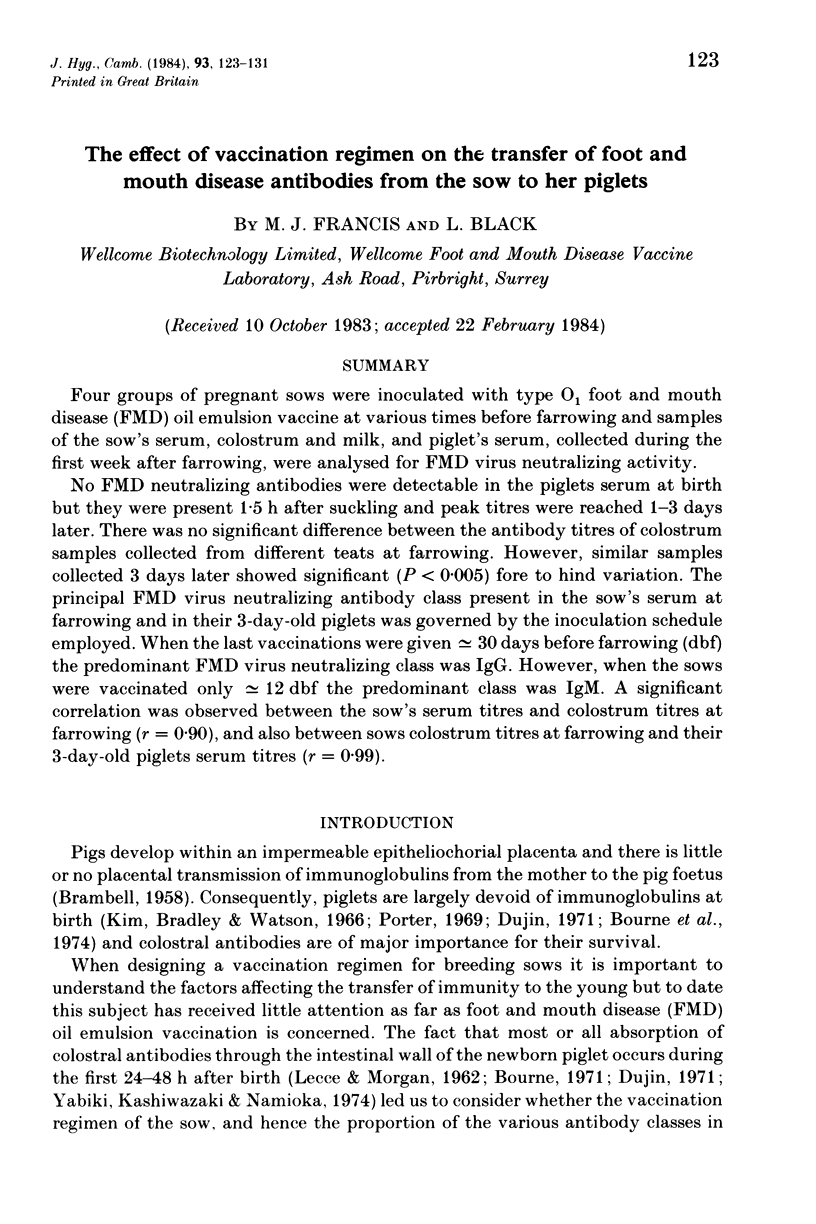
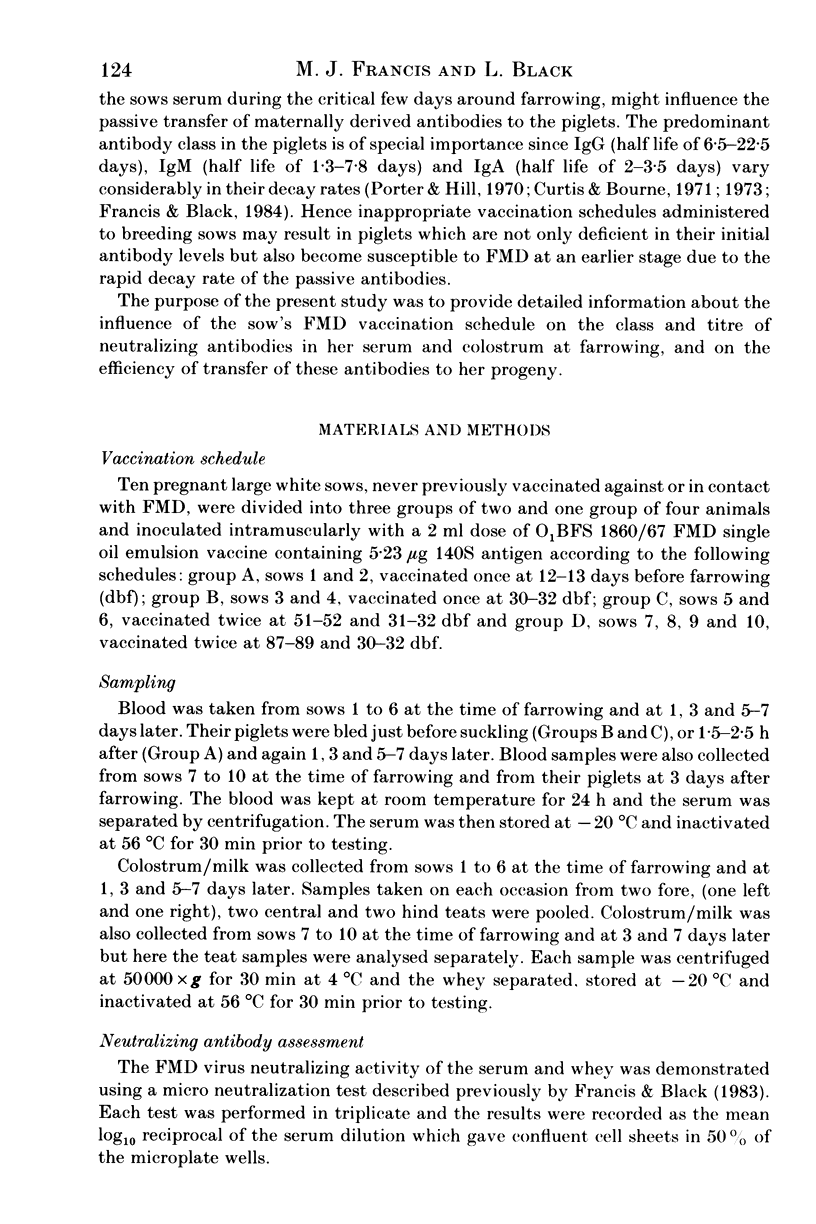
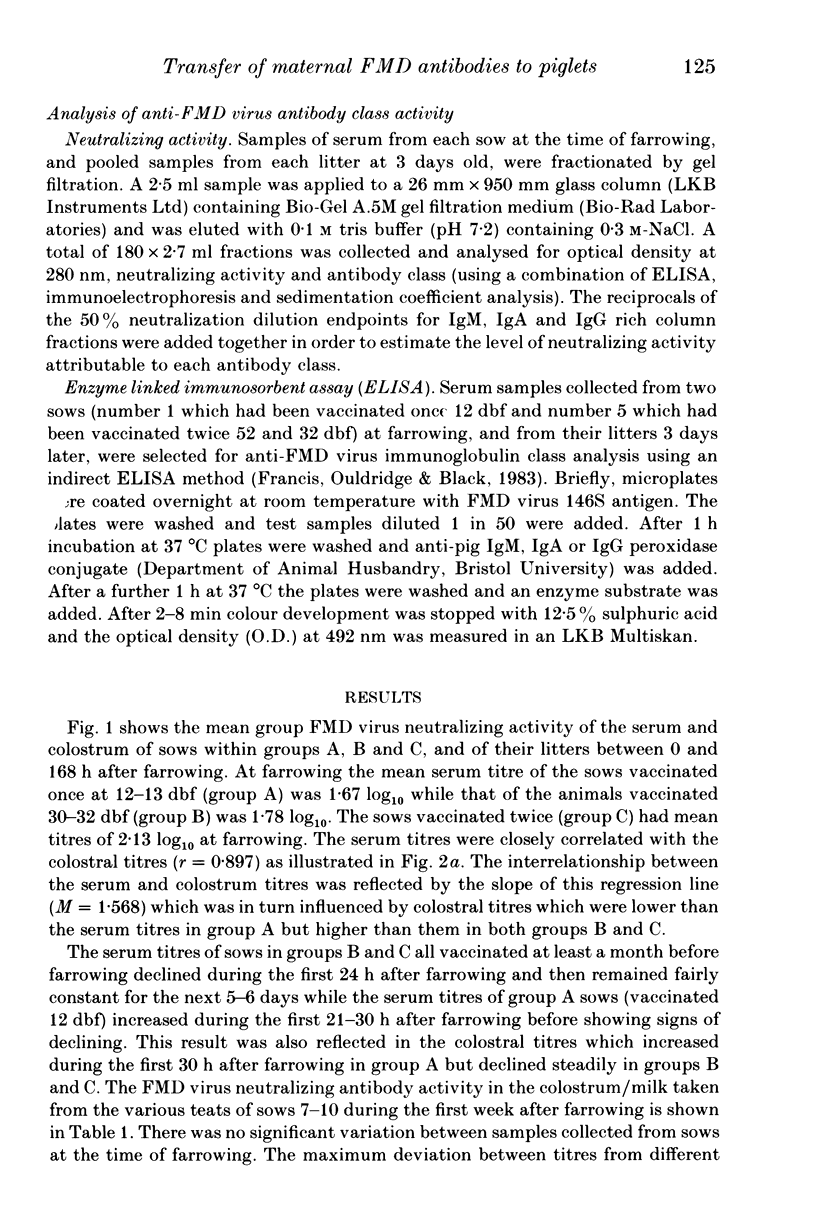
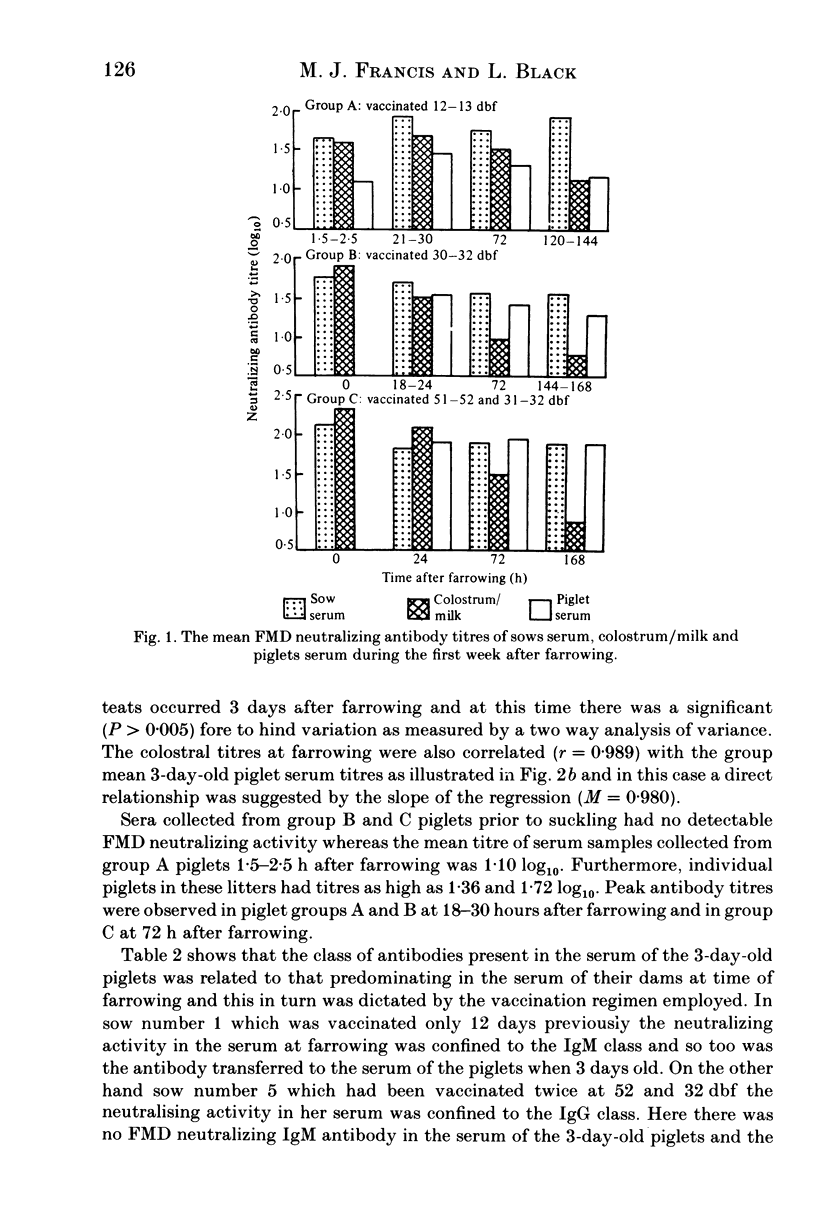
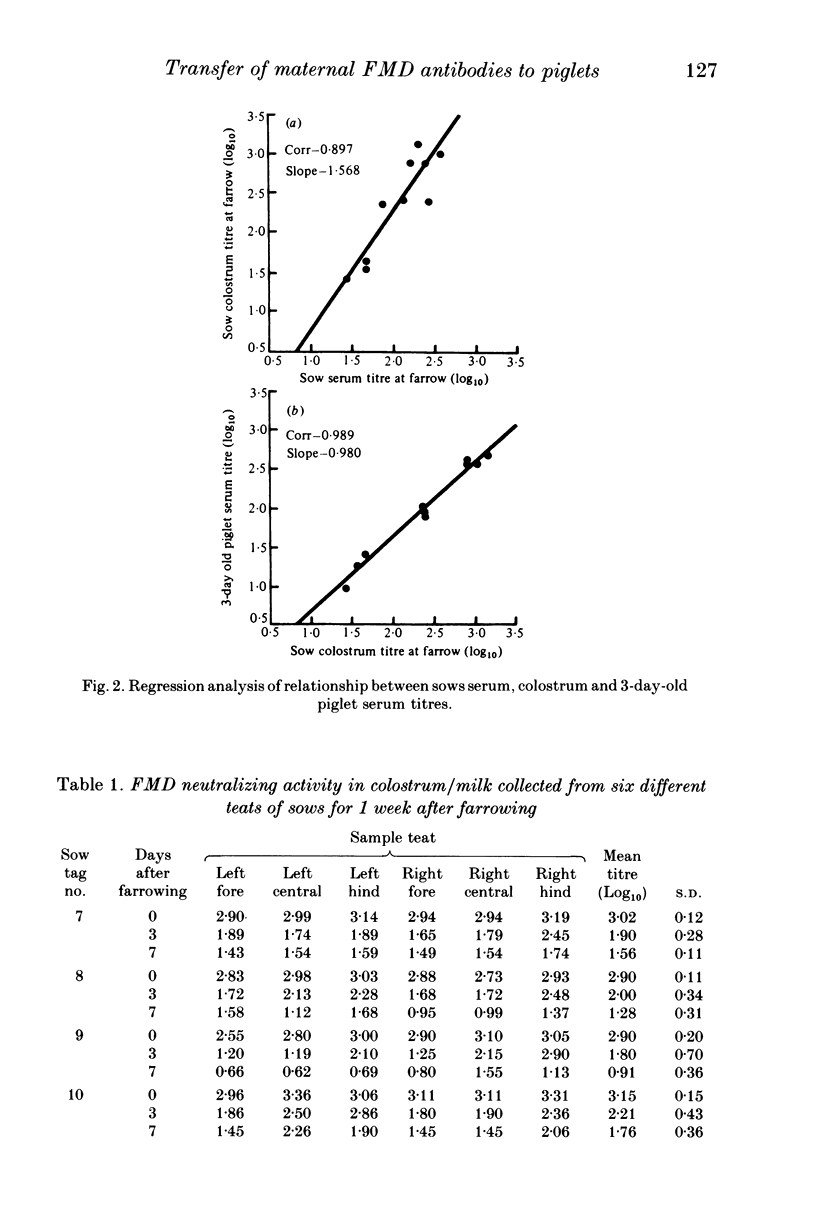

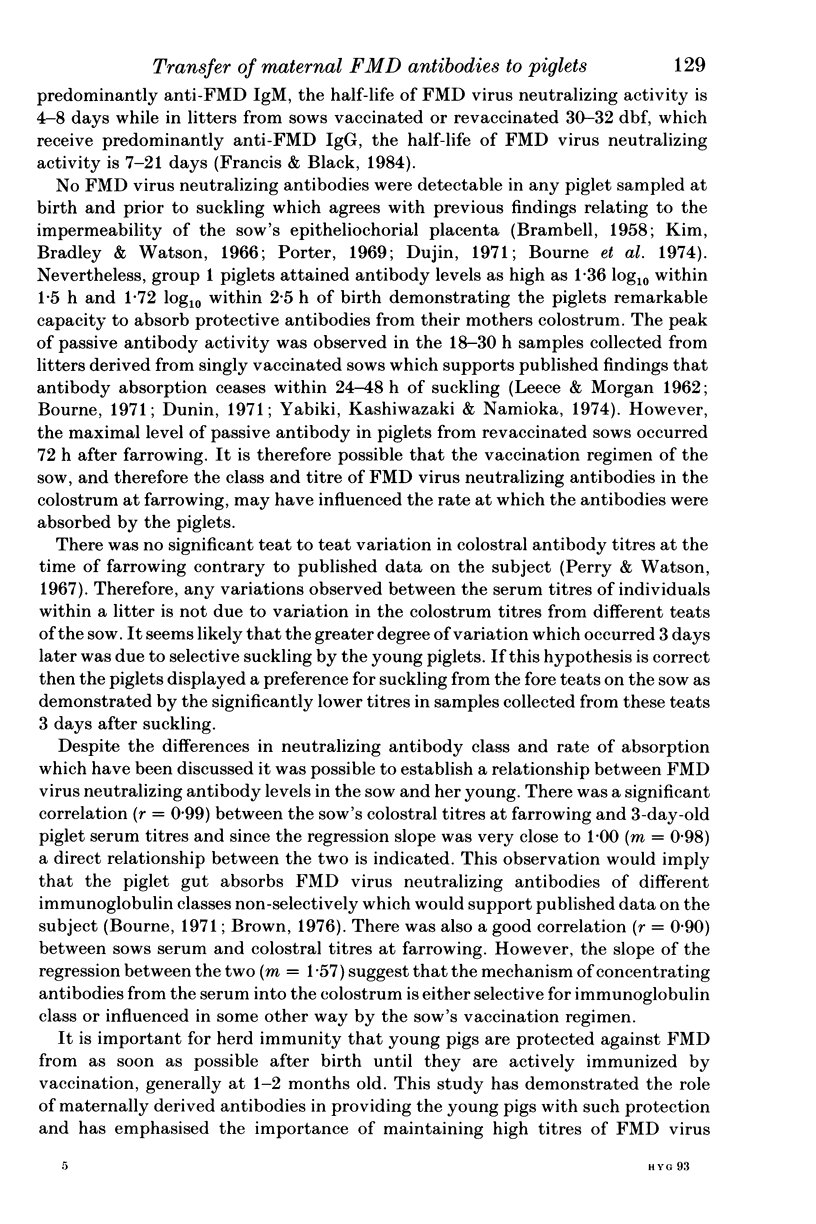

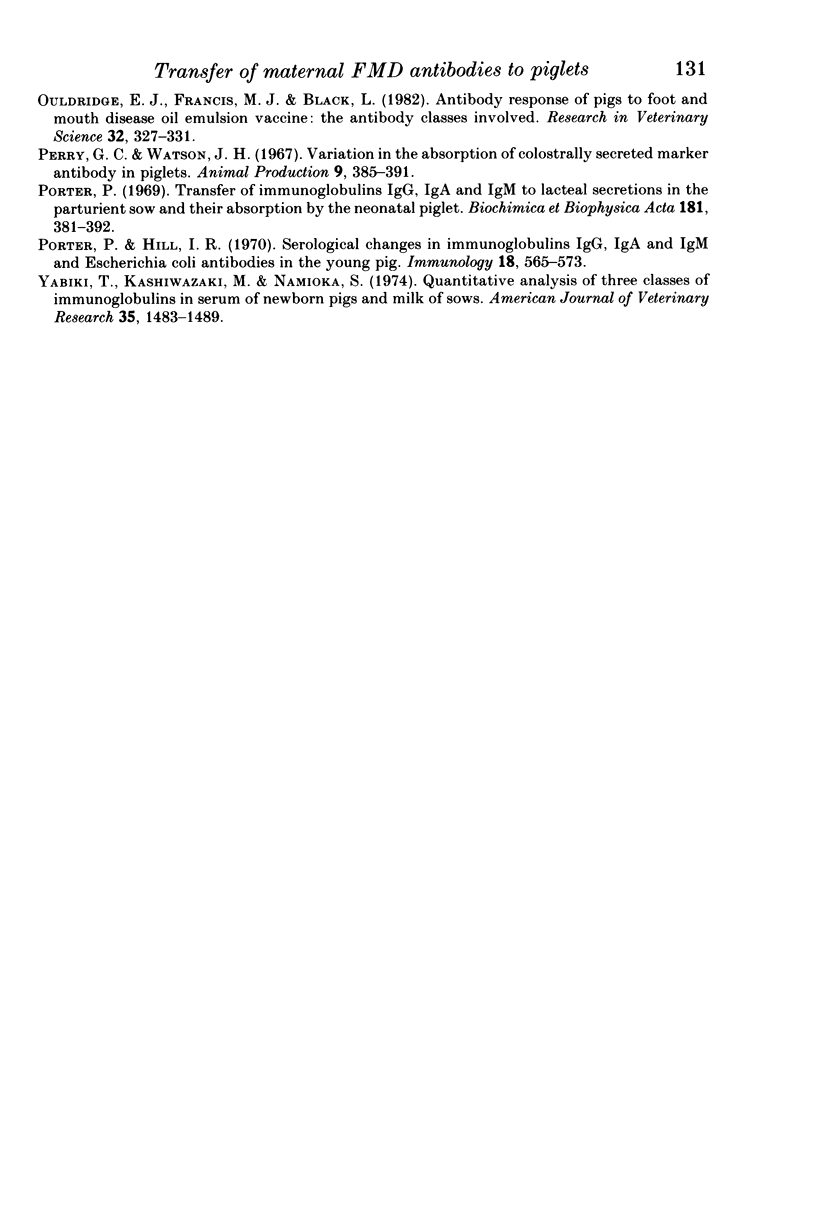
Selected References
These references are in PubMed. This may not be the complete list of references from this article.
- Anderson E. C., Masters R. C., Mowat G. N. Immune response of pigs to inactivated foot-and-mouth disease vaccines. Response to emulsion vaccines. Res Vet Sci. 1971 Jul;12(4):342–350. [PubMed] [Google Scholar]
- Bourne F. J., Curtis J., Johnson R. H., Collings D. F. Antibody formation in porcine fetuses. Res Vet Sci. 1974 Mar;16(2):223–227. [PubMed] [Google Scholar]
- Curtis J., Bourne F. J. Half-lives of immunoglobulins IgG, IgA and IgM in the serum of new-born pigs. Immunology. 1973 Jan;24(1):147–155. [PMC free article] [PubMed] [Google Scholar]
- Curtis J., Bourne F. J. Immunoglobulin quantitation in sow serum, colostrum and milk and the serum of young pigs. Biochim Biophys Acta. 1971 Apr 27;236(1):319–332. doi: 10.1016/0005-2795(71)90181-4. [DOI] [PubMed] [Google Scholar]
- Francis M. J., Black L. Antibody response in pig nasal fluid and serum following foot-and-mouth disease infection or vaccination. J Hyg (Lond) 1983 Oct;91(2):329–334. doi: 10.1017/s0022172400060344. [DOI] [PMC free article] [PubMed] [Google Scholar]
- Francis M. J., Ouldridge E. J., Black L. Antibody response in bovine pharyngeal fluid following foot-and-mouth disease vaccination and, or, exposure to live virus. Res Vet Sci. 1983 Sep;35(2):206–210. [PubMed] [Google Scholar]
- Kim Y. B., Bradley S. G., Watson D. W. Ontogeny of the immune response. I. Development of immunoglobulins in germfree and conventional colostrum-deprived piglets. J Immunol. 1966 Jul;97(1):52–63. [PubMed] [Google Scholar]
- LECCE J. G., MORGAN D. O. Effect of dietary regimen on cessation of intestinal absorption of large molecules (closure) in the neonatal pig and lamb. J Nutr. 1962 Nov;78:263–268. doi: 10.1093/jn/78.3.263. [DOI] [PubMed] [Google Scholar]
- McKercher P. D., Giordano A. R. Foot-and-mouth disease in swine. II. Some physical-chemical characteristics of antibodies produced by chemically-treated and non-treated foot-and-mouth disease virus. Arch Gesamte Virusforsch. 1967;20(1):54–70. [PubMed] [Google Scholar]
- Ouldridge E. J., Francis M. J., Black L. Antibody response of pigs to foot-and-mouth disease oil emulsion vaccine: the antibody classes involved. Res Vet Sci. 1982 May;32(3):327–331. [PubMed] [Google Scholar]
- Porter P., Hill I. R. Serological changes in immunoglobulins IgG, IgA and IgM and Escherichia coli antibodies in the young pig. Immunology. 1970 Apr;18(4):565–573. [PMC free article] [PubMed] [Google Scholar]
- Porter P. Transfer of immunoglobulins IgG, IgA and IgM to lacteal secretions in the parturient sow and their absorption by the neonatal piglet. Biochim Biophys Acta. 1969 Jul 1;181(2):381–392. doi: 10.1016/0005-2795(69)90271-2. [DOI] [PubMed] [Google Scholar]
- Yabiki T., Kashiwazaki M., Namioka S. Quantitative analysis of three classes of immunoglobulins in serum of newborn pigs and milk of sows. Am J Vet Res. 1974 Dec;35(12):1483–1489. [PubMed] [Google Scholar]


